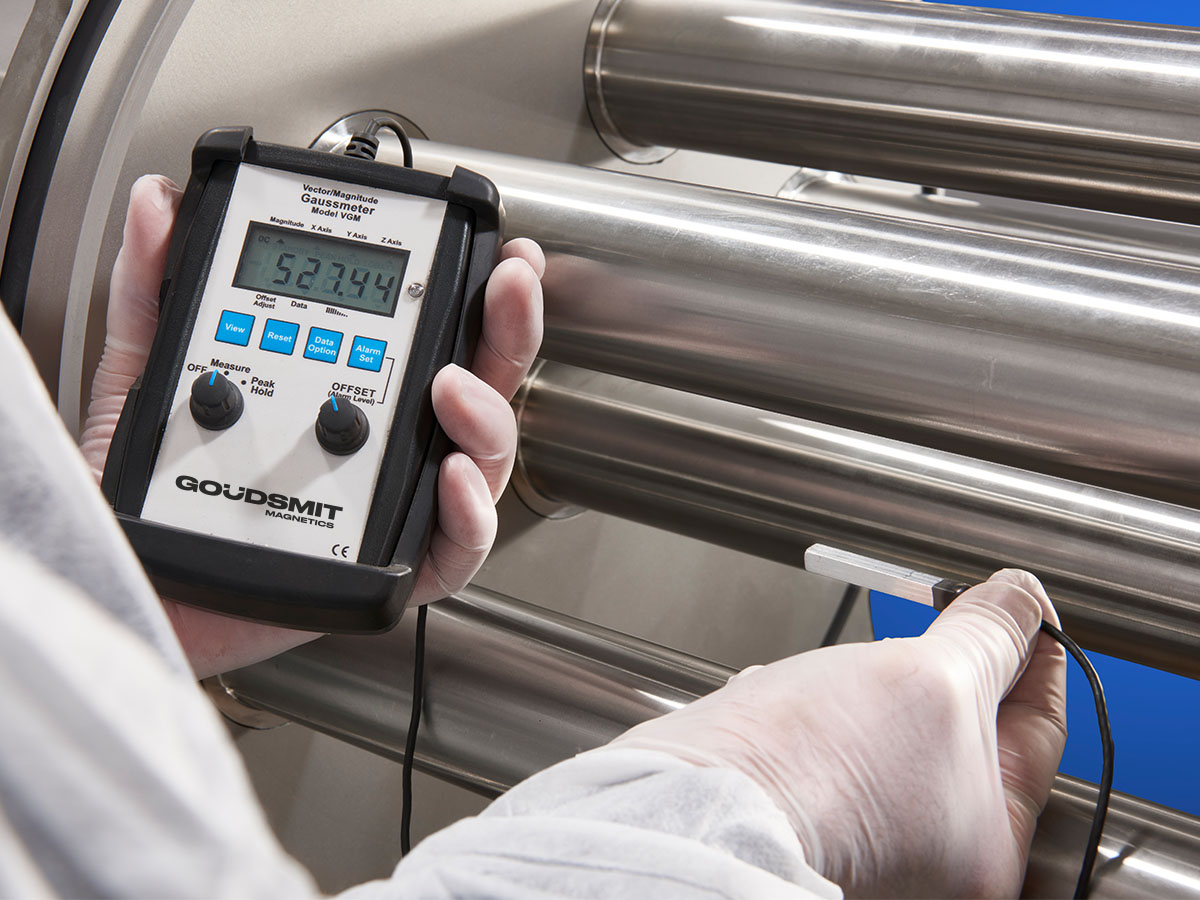Food industry: why do you have to measure magnets?
We received a request from a French company that makes nougat. (The wonderful Nougat de Montélimar!) They wanted to have the magnets in their production facility measured in order to – in their own words – satisfy the quality standards and ensure that the magnets are still working optimally. This is also necessary in order to continue to meet the HACCP (Hygienic Critical Control Points) quality assurance standards.
This quality label applies to all manufacturers of food products, whether they make chocolate, sugar, milk powder, flour or soup.
Measuring magnets: how is it done and what are the criteria?
Guy Mutsaerts is an expert in the field of magnets for the food industry. He regularly measures magnets himself and explains all the ins and outs: ‘In principle, a permanent magnet retains its magnetic value for life, so there is little risk that the magnetic field strength will degrade. The only factors that could cause a magnet to lose its strength are: fracture, corrosion or heating (temp. >80 °C). Exposure to heat is naturally something one would expect in the food industry. When cleaning with hot water or placing in a pasteurizer, for example. See his explanation in this video:
Gaussmeter
The magnetic field strength is measured with a gaussmeter, yet this does not always provide an accurate indication, and it tells us nothing about the effectiveness! All it really does is tell you there has been no reduction of the magnet’s strength. The only true way to test a magnet’s operation is with test particles. Because this is very difficult to do in practice, a flux measurement is the best alternative.’

HACCP specifications
Guy continues: ‘The problem is that the HACCP specs say nothing about the operation and implementation of a magnet. They only mention the gauss value or flux density. These may be correct, but operation and implementation are also important criteria. Take, for example, a situation in which there are no stainless steel pipes around the magnets; they will rust, and bacteria will grow between the magnets.
Distance between magnetic bars
The operation is also affected by the distance between the bars. These are often placed farther apart to attain a large capacity. This results in a gap in the magnetic field, making it impossible to capture all of the iron particles. To overcome this deficiency, I advocate including the minimum flux density in the HACCP specifications. After all, it is the minimum flux value that determines whether it is possible to capture an iron particle at all. When taking measurements we also encounter situations in which very large magnetic grates have been installed. This size makes cleaning dangerous; it puts operators in danger of crushing during cleaning. Conclusion: quality standards must do more than just specify the flux density ('gauss value').‘
Difference in magnetic value
‘Moreover, in practice we find that a gaussmeter does not always indicate the same values. Despite the fact that these gaussmeters are calibrated you can get different values. Have three people perform the same measurement and you get three different results. This leads to confusion and unease among quality assurance managers. I have learned through experience that it is better not to measure directly on the bar but rather at a slight distance, say 5 mm. The flux density is stable there. This is explained in our whitepaper (PDF).
In-house service
We currently have hundreds of customers in the food industry for which we measure their magnets. Our customers in the food industry feel it is important to have experienced people do this for them once a year. After all, they do not have a calibrated gaussmeter and also lack experience performing the measurements. We are happy to do this for them!"
